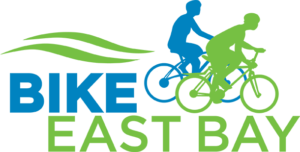The videos below tell the story of “shared spaces.” After watching, you may agree that they give us hope of one day bringing back the public realm and a sense of place to our roadways. At the end of the 3rd video is the following quote from a famous Dutch traffic engineer:

“A safe street is one that tells a rich story about it’s past, its context, and the future hopes of its residents.”
The videos below tell the story of “shared spaces.” After watching, you may agree that they give us hope of one day bringing back the public realm and a sense of place to our roadways. At the end of the 3rd video is the following quote from a famous Dutch traffic engineer:

“A safe street is one that tells a rich story about it’s past, its context, and the future hopes of its residents.”
Shared spaces are a European concept that started in the Netherlands and spread to England, Sweden, Denmark, Belgium and Germany. We hope to bring these wonderful concepts to Berkeley as part of Berkeley’s Downtown Streets and Open Space Improvement Plan.
What are Shared Spaces?
A shared street uses shared space principles to remove much traffic engineering in a way that considers road users equal: motorists yield to bicyclists, who yield to pedestrians, who yield to other pedestrians, who yield to bicyclists, who yield to motorists, who yield to…..you get the idea. There are few signs, paint markings, traffic lights, or rules other than go at a human speed, be courteous and yield to others. It’s like the rules, or lack of rules, you find walking through a parking lot or within a BART station–no one has priority, for the most part. Traffic mixes and everyone makes their way, using eye contact and hopefully some courtesy and basic human interactions to get thru safely. It’s not always nice or polite, but often is, and either way it is part of life in an urban world.
Social long before Facebook
And that is the foundation of shared streets–human interaction. As wonderfully explained at: www.shared-space.org, people do not generally think of streets as serving a social or civic function, but they do. They help us understand who our neighbors are, what is around us, and provide us the ability to talk and interact with one another, buy and sell things, and enjoy our town. They give us a sense of place and history. Once upon a time, streets were as much about being a part of society as moving thru it. And there was a rather informal relationship between the social and the transport functions of streets.  Then the traffic engineers took over. They believed that mixing traffic and pedestrians was inherently dangerous and that ideally pedestrians should be kept completely separate from traffic. With shared streets, the traffic code is replaced by a social code. Some separation remains and safe zones for disabled people are paramount, but the streets are designed for people first, rather than traffic movement. This makes streets places in their own right and increases the richness and variety of public space and its uses.
Then the traffic engineers took over. They believed that mixing traffic and pedestrians was inherently dangerous and that ideally pedestrians should be kept completely separate from traffic. With shared streets, the traffic code is replaced by a social code. Some separation remains and safe zones for disabled people are paramount, but the streets are designed for people first, rather than traffic movement. This makes streets places in their own right and increases the richness and variety of public space and its uses.
Give-and-Take
Shared streets de-emphasize the rigid lines between cars and people by eliminating endless signage, paint markings, traffic lights, physical barriers, separations, etc, which many ignore anyway. Shared spaces introduce concepts of human-scale, social rules, communication, and give-and-take into the public realm of city streets. Pedestrians can cross the street where they like, people can stop and talk, motorists can drop off passengers, cyclists can ride in the main travel way, delivery trucks can unload, all in a common space that cars use for driving and parking. The design of the space makes it clear that it can be used this way, rather than extensive signage. The idea is to design in some uncertainty to ensure that people are forced to be aware of each other, but without giving people the illusion of safety. The road becomes a space for people. Yes, there may always be a need for high-capacity freeways-where speed, predictability, simplicity, repetitiveness and linearity prevail. But what makes roads good public spaces is exactly the opposite–slow, unpredictability, complexity, diversity and multi-purpose. In a word–culture.
20 mph: the Design Speed
When different types of road users need to share a space, they need to negotiate the right of way and in order to safely do this they need to be aware of each other. This is only practical when speeds are below 20 mph–the design speed for shared streets. Above 20 mph, motorists quickly lose their ability to see pedestrians and to react if necessary. As the graph to the right shows, a pedestrian is 8 times more likely to be killed by a car going 30 mph than by a car going 20 mph. The risk goes from 5% to almost 45%. Many European cities set a speed limit of 20 mph (30 kph) as a citywide limit for this very reason–speed kills. Shared streets, by their contextual design, naturally limit motor vehicle speeds to below 20 mph, which ensures that motorists make eye contact with pedestrians and bicyclists.
ADA Access
We are well-aware of concerns raised by European shared surface streets and the disabled community and are committed to ensuring that shared spaces are safe spaces and accessible spaces for everyone. Some European shared street designs did not incorporate good access for disabled persons. This is where Berkeley can take the lead by including the Disabled Community from the start and throughout the process. When designing safe zones for shared streets, important elements need to be considered: including tactile enhancements (both signage and underfoot), well-designed curbs, controlled crossings, bus steps, detectors and design treatements that highlight safe spaces yet bring about attractive people-friendly streetscapes that have inclusion at the heart of the design. In fact, safe access for disabled persons is paramount in order for shared space concepts to come to Berkeley, but we see this as an opportunity for Berkeley to once again take a worldwide lead in accessibility design. It will require much dedication and work but the challenges are not insurmountable.
Benefits of Shared Streets
- Safety: Are shared streets safe? You bet! Cities that have embraced shared space concepts have witnessed significant decreases in crashes (up to 40% fewer crashes). The visible presence of a school and of children playing has more effect on behavior and speed than a sign that warns of children crossing the road. That is why shared spaces require that the goings on of society are visible to motorists in public spaces.
- Faster Travel Times: European cities that have implemented shared spaces have maintained traffic volumes and also noticed that travel times improved. Yes, slow is the new quick!
- Good for Business: Shared spaces also present tremendous opportunities to introduce art and cultural heritage back into our towns, which is a great opportunity to revitalize struggling commercial districts and improve public safety.
Challenges Ahead
There were concerns, of course, when shared streets were first introduced, but after many years of experience and enjoyment, communities are embracing them, with Europe leading the way. However, reclaiming public space with less regulation and control is a long-term process requiring much dedication and work to explore the concerns and uncertainties and practical realities faced by everyone. Find out more…..
References
- Read about Ashford, England and their shared space experience in this blog.
www.howwedrive.com. - From 2004-2008, the European Commission conducted a pilot project of seven Shared Space roadway projects in five countries. The results were encouraging. Download the Final Evaluation on Shared Spaces. [1.5MB pdf]
- Several US towns are looking at the concepts of shared spaces. Langley, Washington is one of them. Download the Shared Use Streets: Langley, Washington [292KB pdf] and find out more.
- Shared Spaces Cross the Atlantic introduces some shared space projects in Santa Monica, San Francisco, Chicago and elsewhere.
A few informative videos from Europe introducing the concepts
In this first video, the scene at the 46 second mark is not an illusion, but will make you do a double-take. It’s an impressive city center traffic circle. It may remind you of the center median on Shattuck Avenue, at the Cheeseboard, where people sit on the median grass and enjoy some sunshine and great pizza. There have been complaints against these folks. Count how many people you see complaining in this video.
This is a wonderful introduction to early shared streets and shared spaces concepts, and you get to meet Hans Monderman, the famous Dutch traffic engineer quoted above.
This third video provides great perspective as well as compelling reasoning why slow speeds matter and why they are achieved when roadways become shared and motorist are aware of the spaces around them.
Check out the town of Makkinga, Netherlands. Have you seen a more beautiful village? And where are all the traffic signs?
Shared Space from fred_dot_u on Vimeo.
Looking Ahead….
“Shared Space is not a simple concept. It can easily be misunderstood as a purely physical solution, such as the removal of signs, markings and barriers. Such simplification can cause serious problems, unless sufficient time and communication resources are available to set any changes in the wider context of public aspirations for public space. Raising confidence in the ability to reclaim and to use public space without regulation and controls is not a short-term, easy process. It requires very long-term dedication, and much work to explore the concerns and uncertainties and practical realities faced by residents and traders. Such difficulties are rarely insurmountable in the long term, and it is precisely in the wider, long-term context that the Shared Space brings real added value to investment in the public realm.”
Additional thoughts on Accessibility Issues
The Disabled Persons Transport Advisory Committee (DPTAC), an independent body established by the British Transport Act 1985 to advise Government, states that when designing shared spaces, “provision for pedestrians [should be] supplemented where necessary by accessible pedestrian routes separate from areas also used by vehicles in order to promote personal security for young, elderly and disabled pedestrians. It also means that unless and until there is an alternative delineator which through research is demonstrated to be effective, kerbed footways and formalised pedestrian crossing points with appropriate dropped kerbs and tactile paving, should normally be retained.”
Guide Dogs is an advocacy and service organization in the United Kingdom and they are looking at possible inclusive design solutions for Shared Space town centres – for example, potential ways of delineating between pedestrian and vehicular areas. They started testing proposed designs with disabled people in 2007.
Berkeley has shown that it can lead. Check out the new high-visibility pedestrian-activated crossing in front of the Ed Roberts Campus on Adeline Street. Berkeley is at the forefront in this design, which Caltrans is currently considering adding to their traffic control program. Shared spaces is another great opportunity to lead by building upon the work conducted in the United Kingdom, and elsewhere, to develop the best delineators and safe crossings in the world as part of shared spaces.


